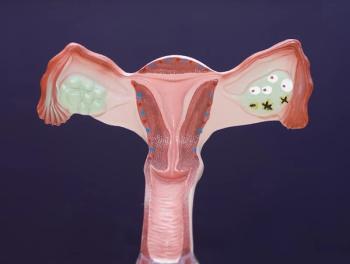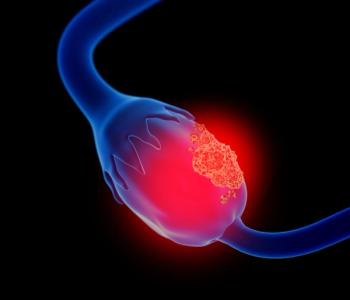
SGO 2019: Despite Missed Endpoint, JAVELIN Trial PD-L1 Subgroup Analysis Redeems
Avelumab alone or with pegylated liposomal doxorubicin did not improve survival in this phase III trial, but a subgroup analysis showed promising findings.
Avelumab alone or in combination with pegylated liposomal doxorubicin did not improve survival for patients with platinum-resistant or refractory epithelial ovarian cancer compared with patients who received pegylated liposomal doxorubicin alone, according to results from the randomized, open-label, phase III JAVELIN Ovarian 200 trial presented at the 2019 Society of Gynecologic Oncology (SGO) 50th Annual Meeting on Women’s Cancer (LBA1).
Despite the negative trial findings, however, a retrospective subgroup analysis showed that patients with programmed death ligand 1 (PD-L1)-positive disease may benefit from the combination of avelumab plus pegylated liposomal doxorubicin.
“This is a very interesting study looking at the role of the immunotherapeutic avelumab, a PD-L1 antibody, in recurrent platinum-resistant ovarian cancer,”
The trial (ClinicalTrials.gov identifier: NCT02580058) included 566 women with platinum-resistant or refractory ovarian cancer. Trial eligibility included three or fewer lines of therapy for patients with platinum-sensitive disease; patients with platinum-resistant disease were not permitted to have any prior lines of therapy.
Patients were randomized in a 1:1:1 fashion to one of three treatment arms: avelumab alone, avelumab plus pegylated liposomal doxorubicin, or pegylated liposomal doxorubicin alone. Progression-free survival (PFS) and overall survival (OS) were the primary endpoints. One of the secondary endpoints was a retrospective analysis of patients grouped by PD-L1 status (positive vs negative).
Compared with the pegylated liposomal doxorubicin arm, the avelumab alone arm had neither improved median PFS (3.5 vs 1.9 months; hazard ratio [HR], 1.68; P > .999) nor median OS (13.1 vs 11.8 months; HR, 1.14; P = .8253). Compared with the pegylated liposomal doxorubicin arm, the avelumab plus pegylated liposomal doxorubicin arm failed to significantly improve median PFS (3.5 vs 3.7 months; HR, 0.78; P = 0.0301) and median OS (13.1 vs 15.7 months; HR, 0.89; P = .2082).
The overall response rate (ORR) was 4.2% (95% CI, 1.8–8.1) for the pegylated liposomal doxorubicin alone arm compared with 3.7% (95% CI, 1.5–7.5) for the avelumab alone arm and 13.3% (95% CI, 8.8–19.0) for the avelumab plus pegylated liposomal doxorubicin arm. About the ORRs, Gray said, “In general, these are low response rates, as a large percentage of patients were enrolled with poor prognosis.” She noted that a quarter of patients were primary platinum refractory, and close to 50% had primary platinum resistance (ie, only one line of prior therapy).
The retrospective PD-L1 subgroup analysis, for which 442 patients were evaluable, revealed that patients with PD-L1–positive disease may benefit from avelumab plus pegylated liposomal doxorubicin. For the avelumab plus pegylated liposomal doxorubicin arm, patients with PD-L1–positive tumors had a higher ORR than those with PD-L1–negative tumors (18.5% vs 3.4%). These PD-L1 positive patients who received the avelumab combination therapy had similar PFS (3.7 vs 3.9 months) and improved OS (18.4 vs 12.7 months) compared with PD-L1–negative patients.
“In the subgroup analysis, patients with PD-L1–positive tumors had a trend to higher ORR,” said Gray. “I think this leaves room for future clinical trials with avelumab in combination with chemotherapy, especially in PD-L1–positive tumors.”
Newsletter
Stay up to date on recent advances in the multidisciplinary approach to cancer.
















































































